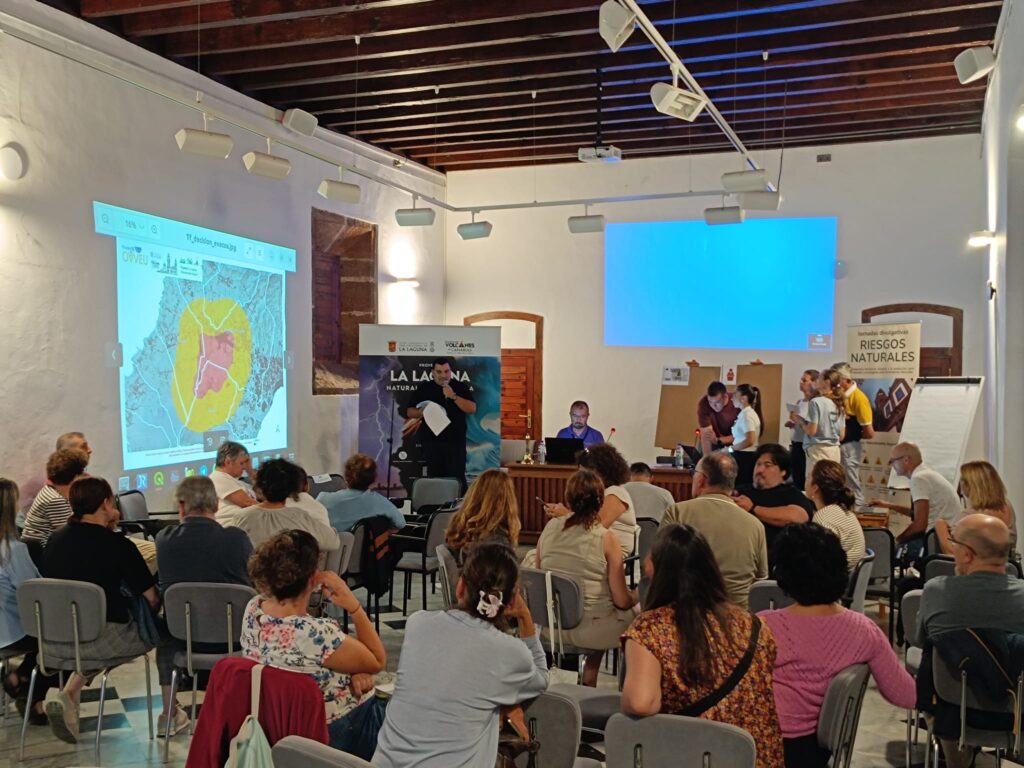
The Cabildo de Tenerife, along with the Federation of Transportation Entrepreneurs, has forged an agreement that will introduce smaller guaguas for discretionary transport operating in Anaga Rural Park and Masca. These vehicles will measure between 10 and 12.5 metres and will follow a single direction of travel.
In Anaga, the president of the Cabildo, Rosa Dávila, stated that the tourist guaguas will accommodate a maximum of 50 passengers and will range in length from 10 to 12.5 metres. They will enter San Andrés and exit via Las Mercedes; in Masca, they will arrive through Santiago del Teide and depart for Buenavista.
This initiative aims to prevent two buses from travelling in opposing directions, which complicates operations due to the narrow pathways and often leads to congestion. Dávila referred to this as “a historic agreement,” involving all discretionary transport companies operating in Tenerife.
José Agustín Espino, president of the Federation of Transportation Entrepreneurs, remarked that this agreement serves as “a starting point for various subsequent agreements” that the sector will undertake “to partially address the significant mobility challenges,” emphasising that the industry “represents the solution, not the problem.”
José Francisco Pérez, representing discretionary transport companies in Tenerife, noted that the concept for this agreement originated from the transport providers themselves, who sought, in collaboration with the Cabildo, the optimal routes to ensure efficiency.
He mentioned that the firms already possess smaller buses, scheduled to commence operations from May 15 in Anaga and Masca, although they anticipate needing a year to update or modify their fleets in line with these new requirements, as necessary.
When questioned about the potential for implementing a cap on the number of tourist guaguas permitted daily in these rural parks, the Cabildo president affirmed that “the issue” of mobility “does not predominantly rest with company operations, but rather in removing private vehicles or rental cars without drivers.”
Consequently, there is a keen interest in establishing deterrent parking in Anaga, similar to the existing one in Santiago del Teide, from which travellers can take a connecting guagua. Rosa Dávila noted that there is land in the quarries that “has already been agreed upon with the owners.”
The culmination of this agreement follows the VI Mobility Meeting, organised by the Cabildo de Tenerife, which included participation from various Professional Colleges, CEOE Tenerife, Ashotel, Fepeco, Femete, the Regional Federation of the Taxi, the General Directorate of Traffic, the Civil Guard, the University of La Laguna, local representatives, and members of the transport sector.
The goal is to coordinate efforts that facilitate the decongestion of the island’s roads by promoting public transport, developing infrastructure, advancing railway projects, and implementing initiatives that enhance mobility and bolster sustainability.
Rosa Dávila, president of the Cabildo de Tenerife, briefed the attendees on the progress achieved over recent months, including a collaborative project with the General Directorate of Traffic to roll out a system of intelligent traffic lights on the TF-5 next October, between Guamasa and Sauzal.
This system, founded on ‘Ramp Atering’ technology, will facilitate the regulated entry of vehicles onto the motorway in a staggered manner via ‘smart traffic lights’, thereby preventing all cars from accessing and congesting the primary lanes.
The innovation of this initiative lies in its management by artificial intelligence, employing sensors, cameras, and predictive models that can learn from real-time traffic patterns and adjust the passage frequency according to the volume of vehicles and the speed of flow, particularly during busy periods.
The aim is to minimise delays, enhance traffic fluidity, and improve road safety on one of the most crowded roads on the island, which accommodates over 124,000 vehicles daily.
Additionally, Dávila announced further measures, such as the enhancement of public transport with the addition of 320 new buses to the Titsa fleet, thanks to a collective investment of 113.4 million euros; as well as the agreement to stagger entry times at the ULL campuses starting from the 2025-2026 academic year, which is expected to reduce daily vehicles by up to 500 during peak periods.
The Deputy Minister of Infrastructure for the Government of the Canary Islands, Francisco González, emphasised the projects aimed at expanding the TF-1 motorway, which will incorporate a third lane between San Isidro and Las Américas, an area noted for its high traffic density on the island.
















